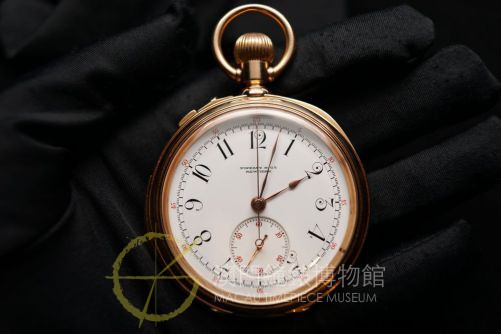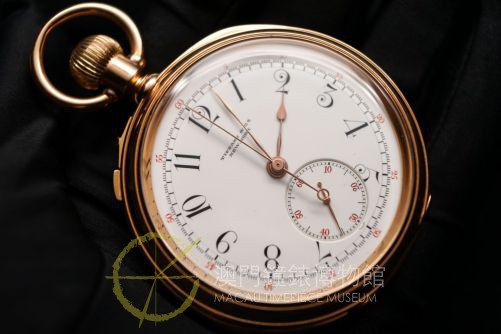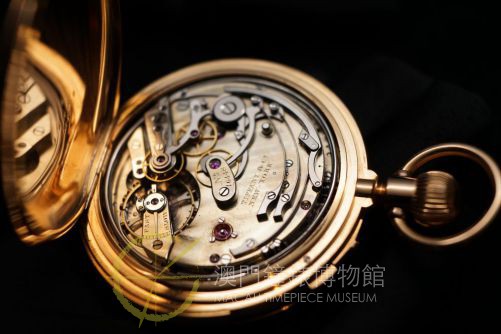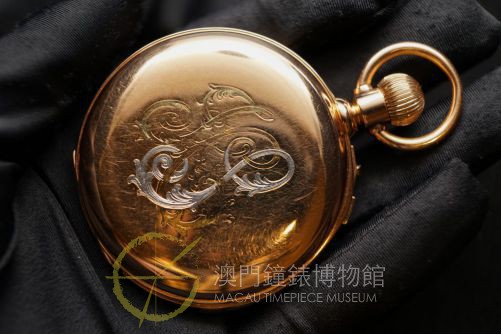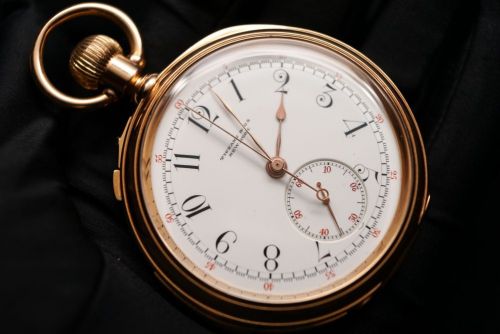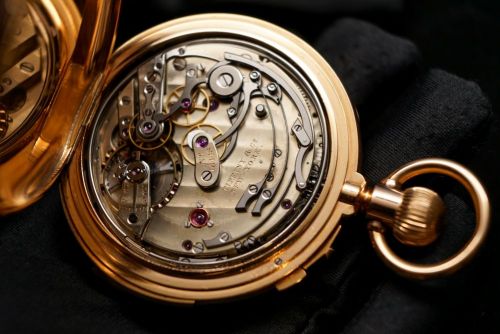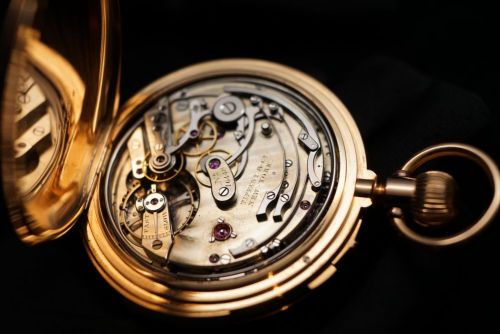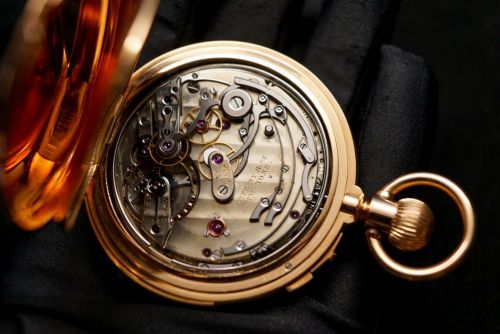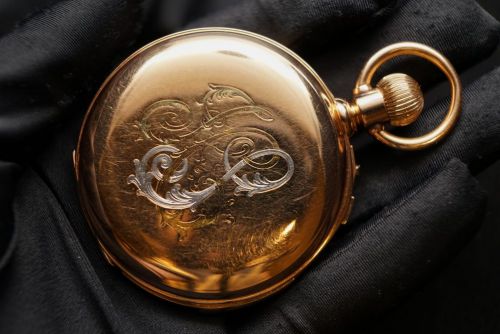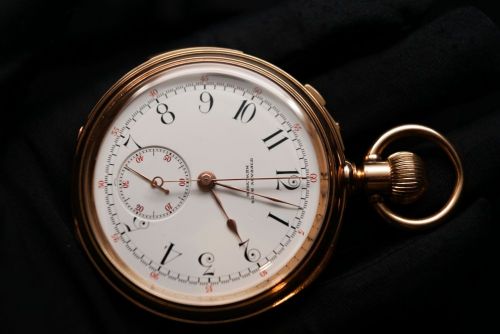Tiffany Minute Repeater and Split-Seconds Pocket Watch
Inventory number: PW1809036
Made in Switzerland circa 1890, 54mm, 18K red gold open-face case, gold slide for the repeat activation, gold push-button for the split-second function. A timepiece with complicated minute repeater and split-seconds chronograph functions.
Striking is very useful at a time when electricity did not yet exist in order to read the time in the dark. The minute repeater (most complicated) will strike the hour, quarter, and minute after activating to tell people the time.
Minute repeater
The first mechanisms to precisely indicate the number of minutes elapsed appeared in the early years of the 18th century (1700-1710), for the most part in southern Germany. Thomas Mudge has traditionally been credited with the invention of this complication, circa 1750.
The minute repeater works like the quarter repeater, with the addition that, after the hours and a quarter hours are sounded, the number of minutes since the last quarter-hour is sounded. This requires three different sounds to distinguish hours, quarters, and minutes. Often the hours are signaled by a low tone, the quarters are signaled by a sequence of two tones ("ding-dong"), and the minutes by a high tone. For example, if the time is 2:49 then the minute repeater will sound 2 low tones representing 2 hours, 3 sequence tones representing 45 minutes, and 4 high tones representing 4 minutes: "dong, dong, ding-dong, ding-dong, ding-dong, ding, ding, ding, ding".
Split-Seconds
It is used to measure the time of different events that begin but do not end together. Activating chronograph, two hands continue to move simultaneously, press the push-button to stop the first hand when the first event ends, after reading the intermediate time a second push on the button makes it catch up with the first hand and the two continue their movement together. At the end of the second event, the split-seconds hand is stopped again to read this second intermediate time, and so on. At the end of the last observed event, both hands can be stopped and returned to zero.

